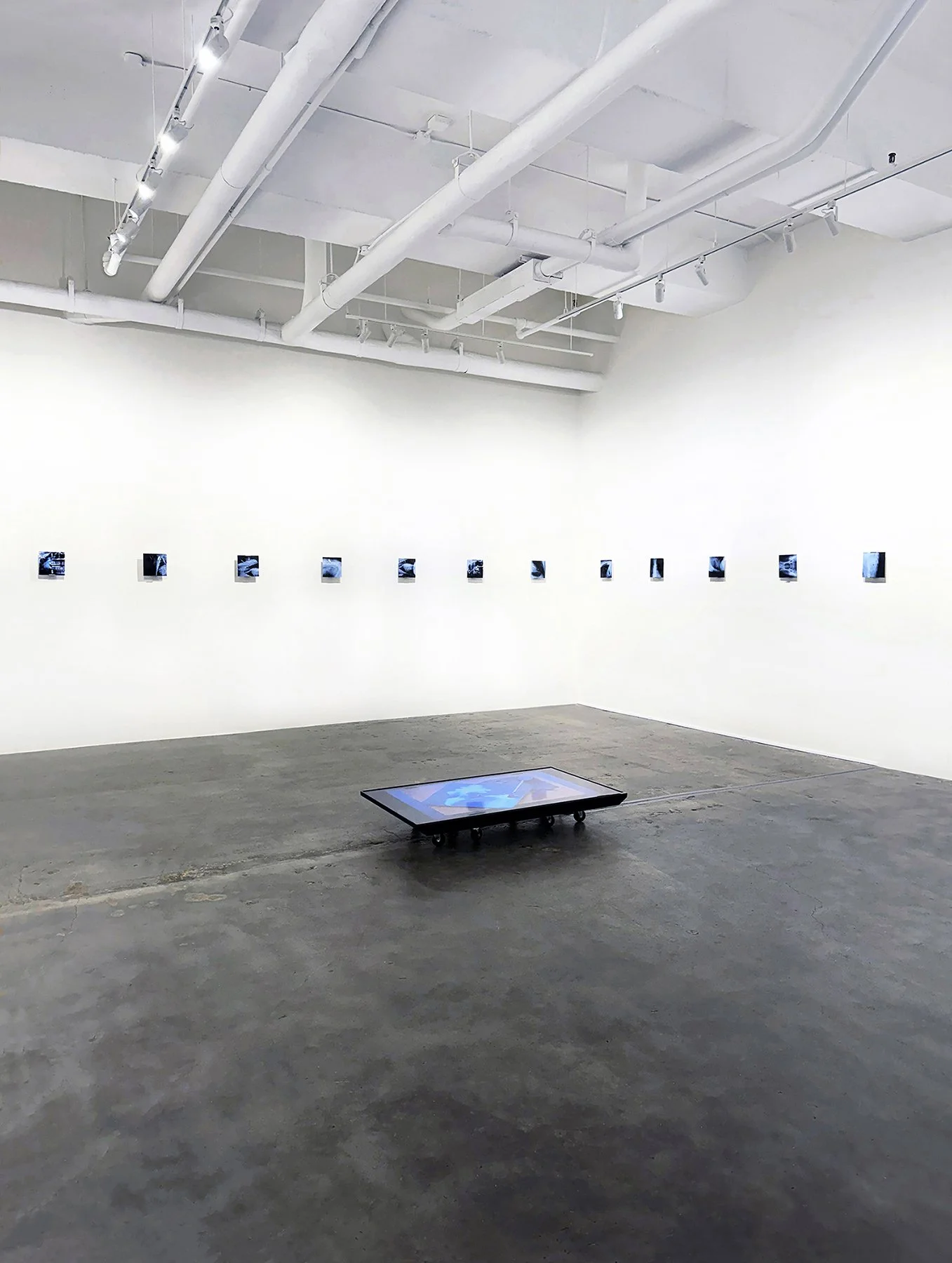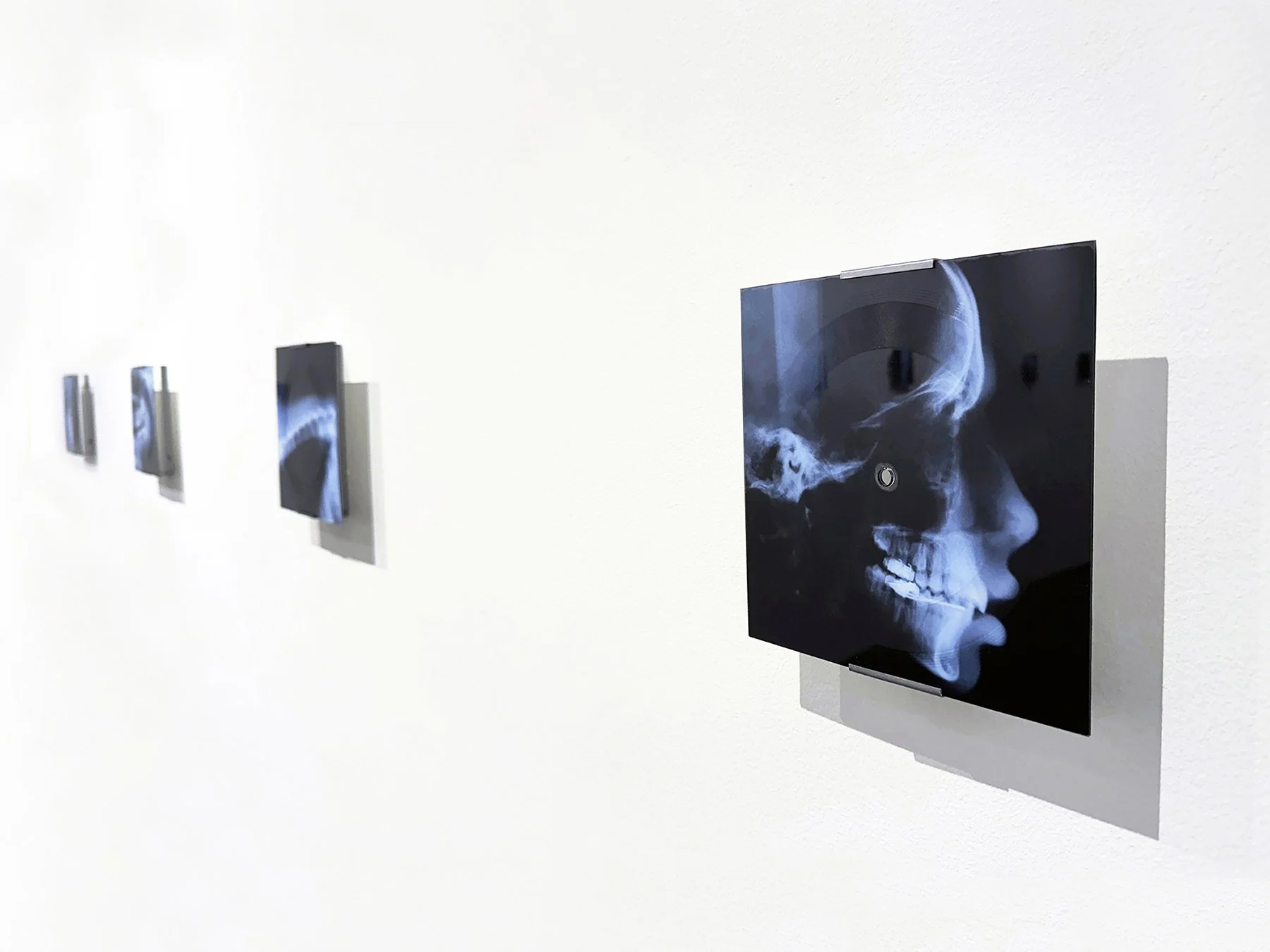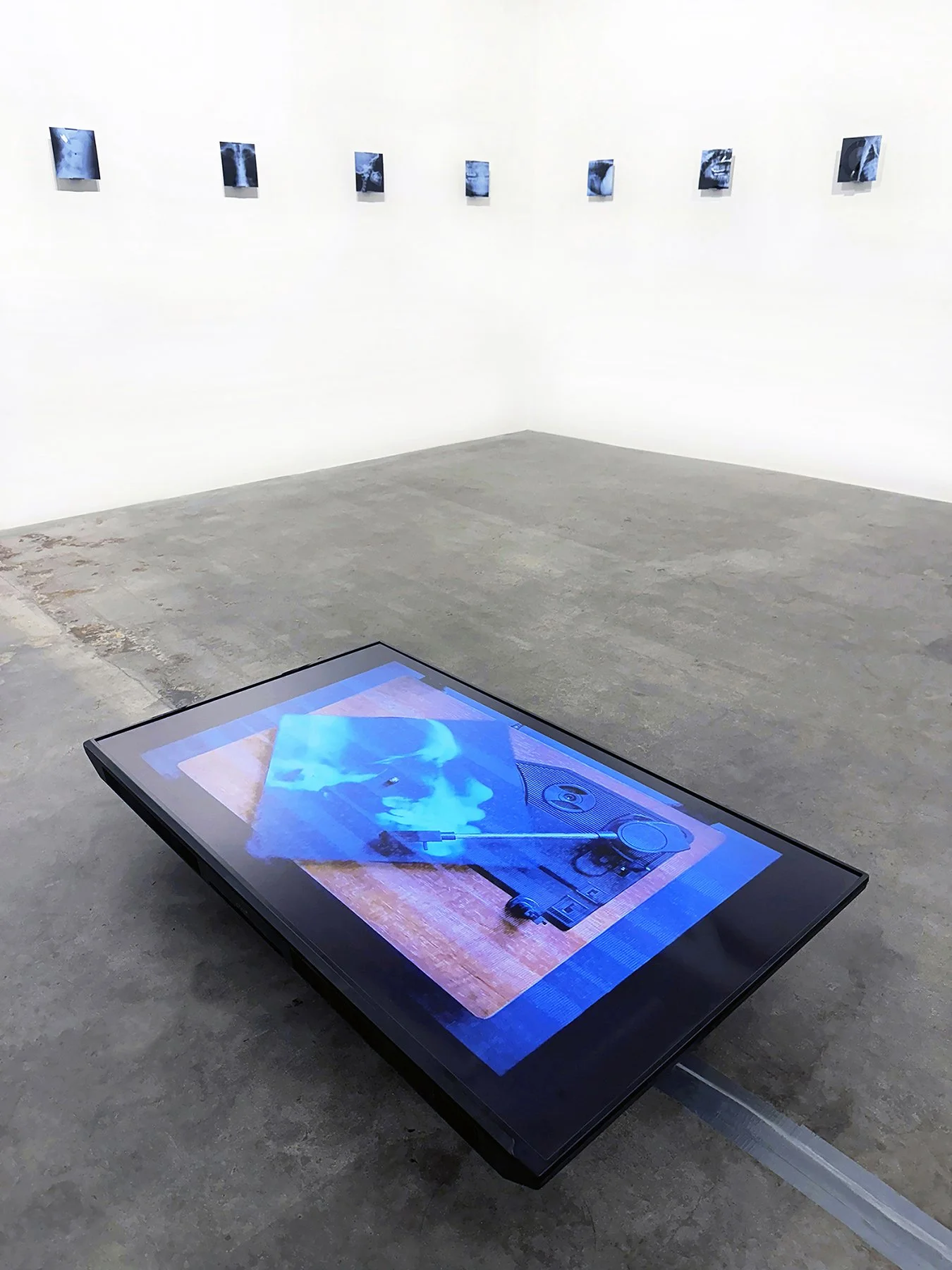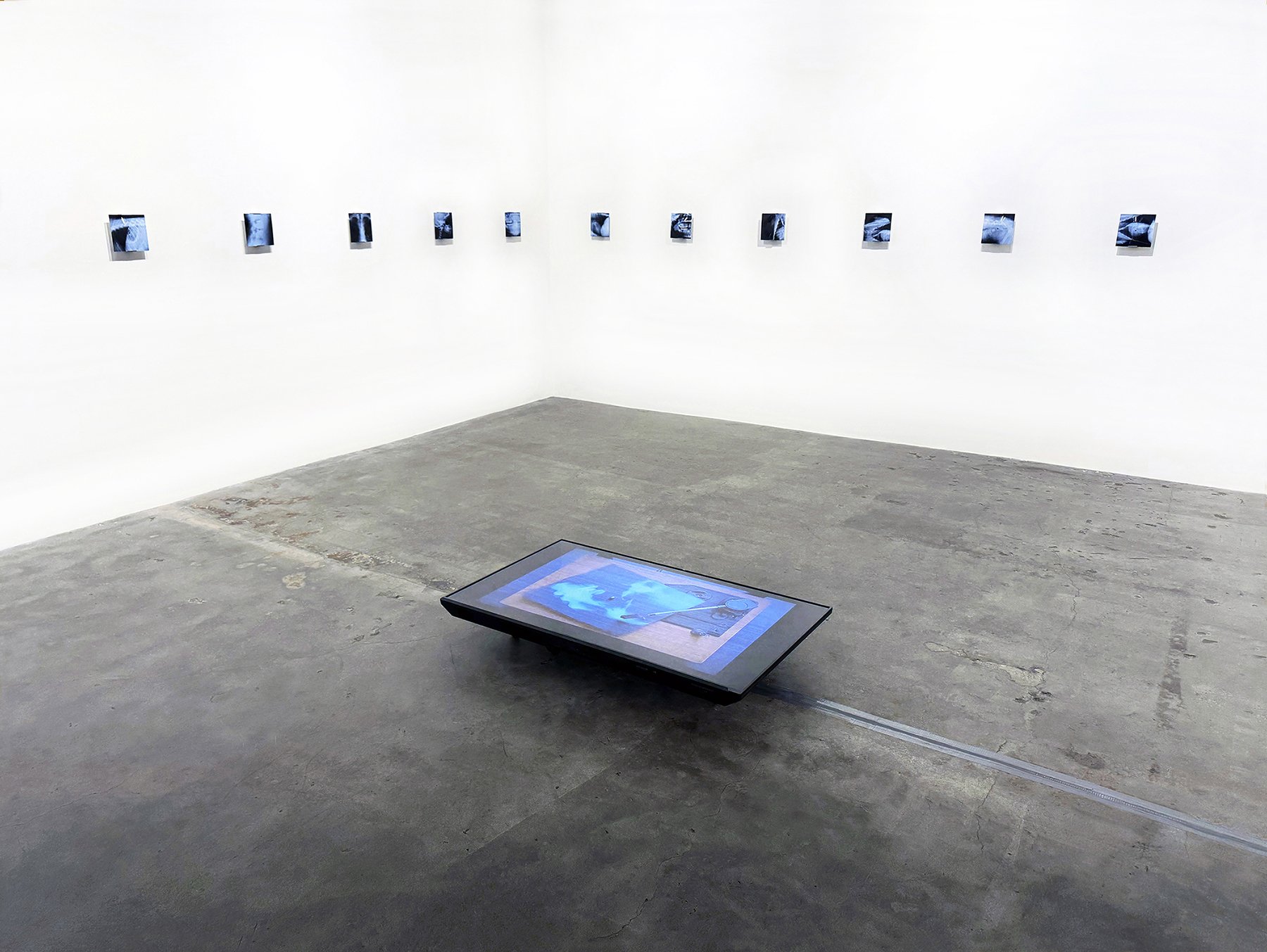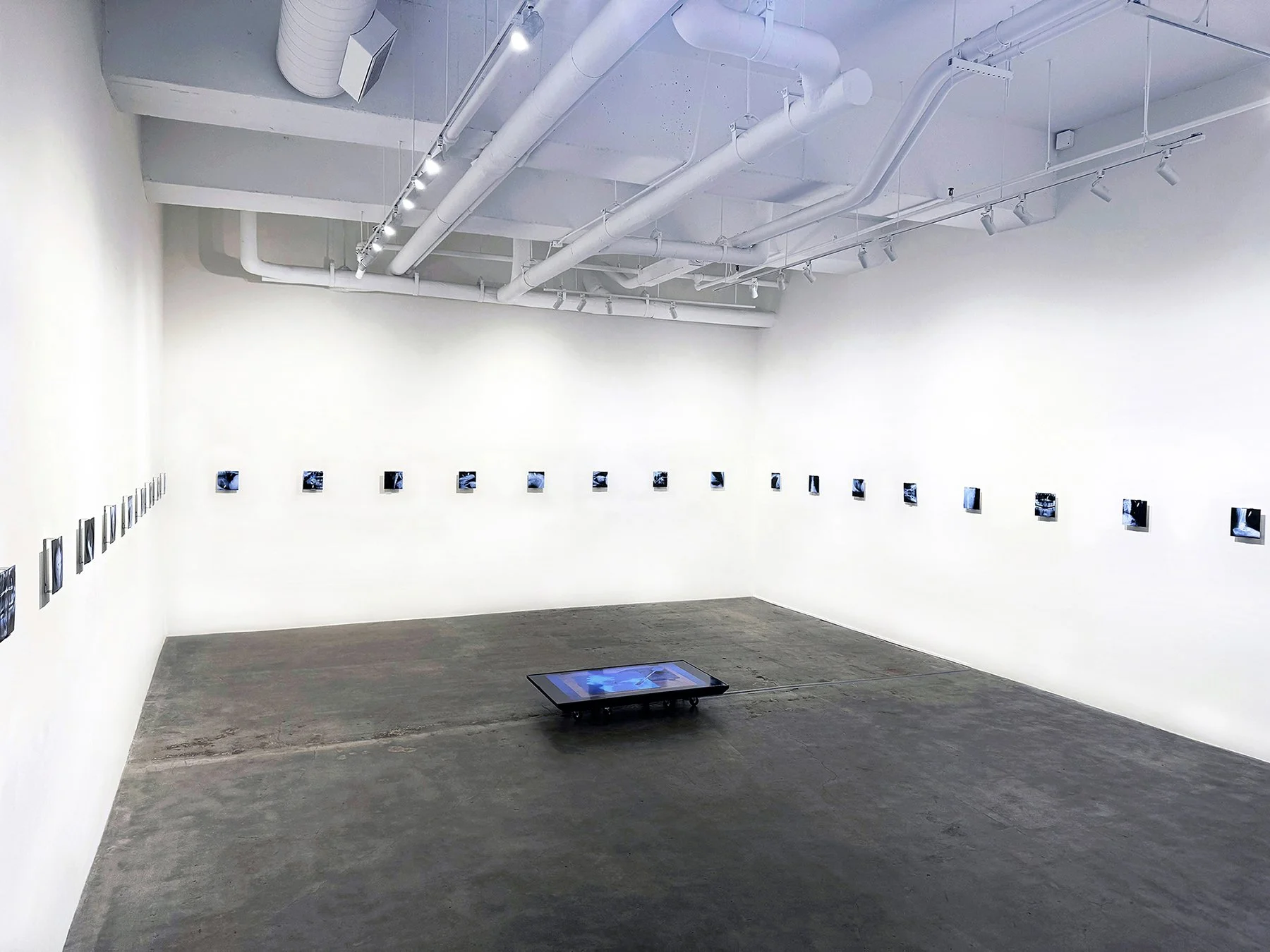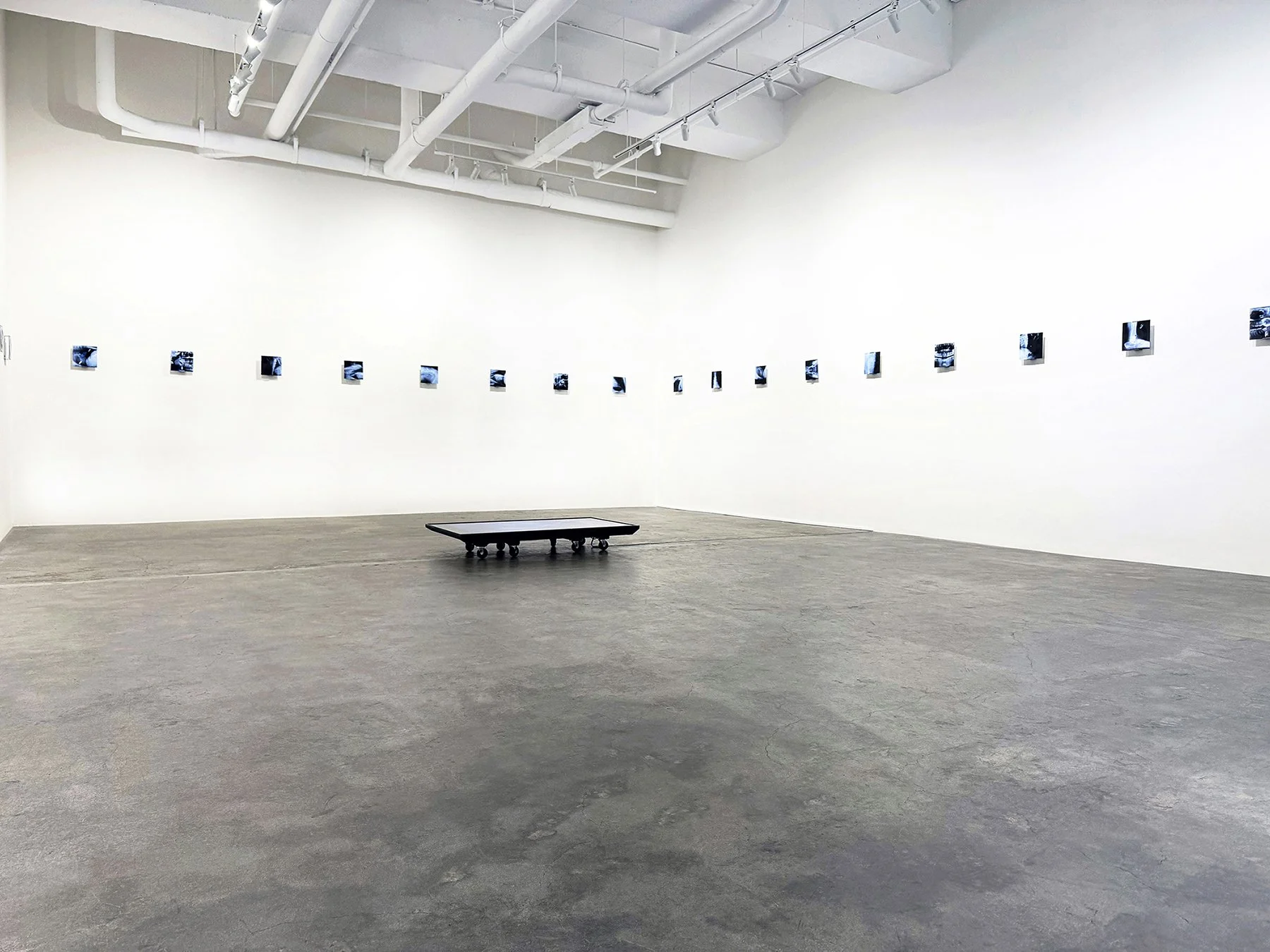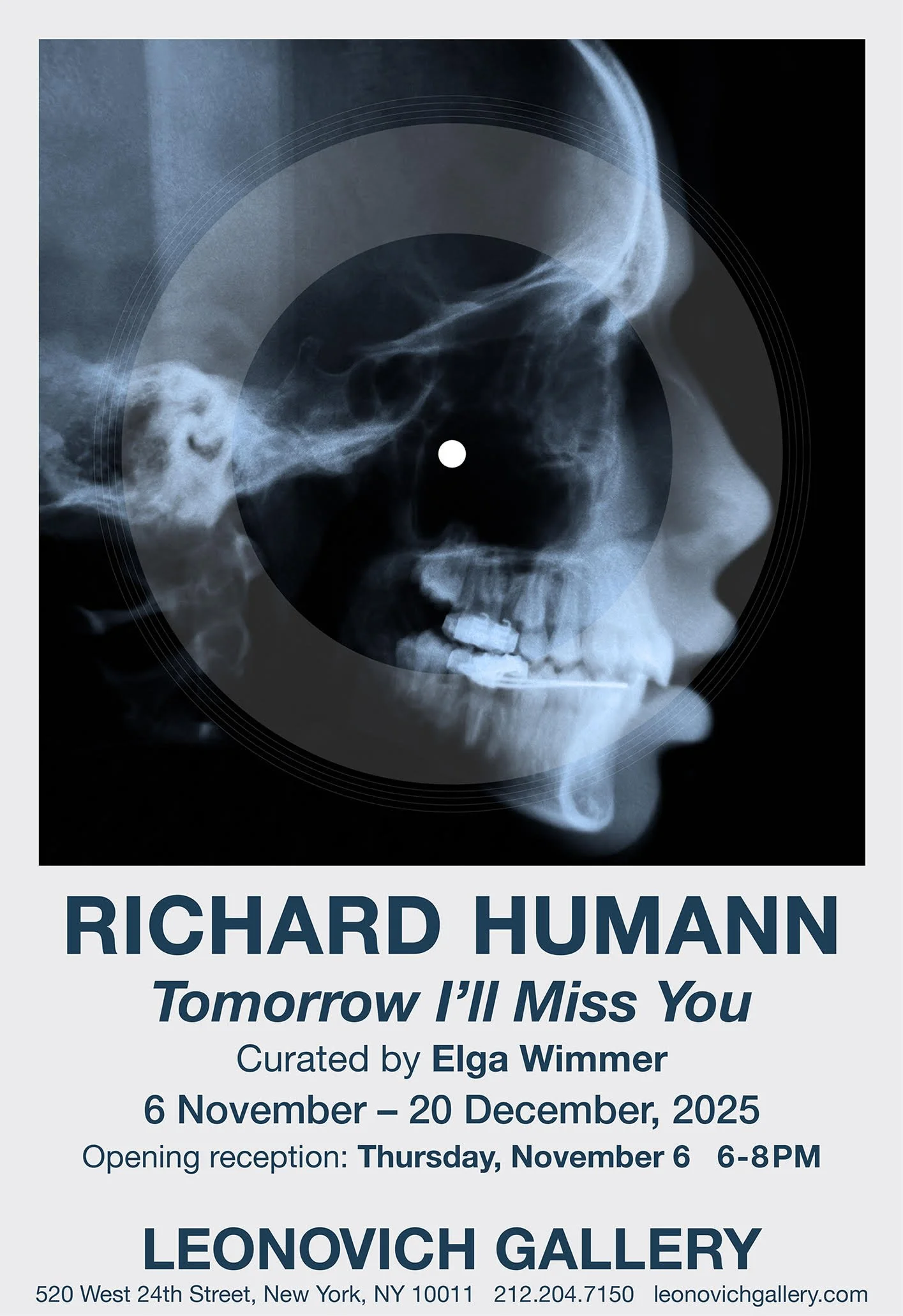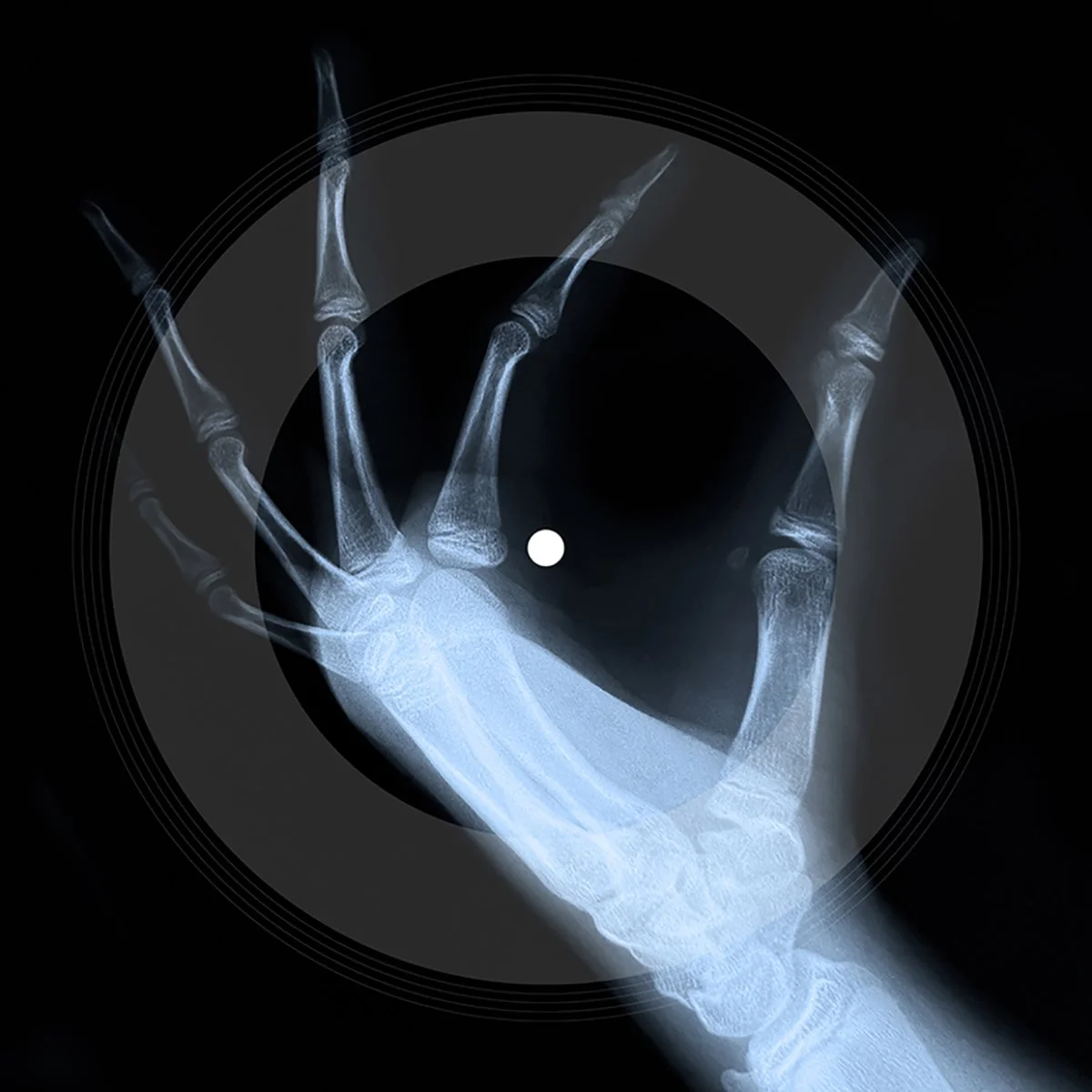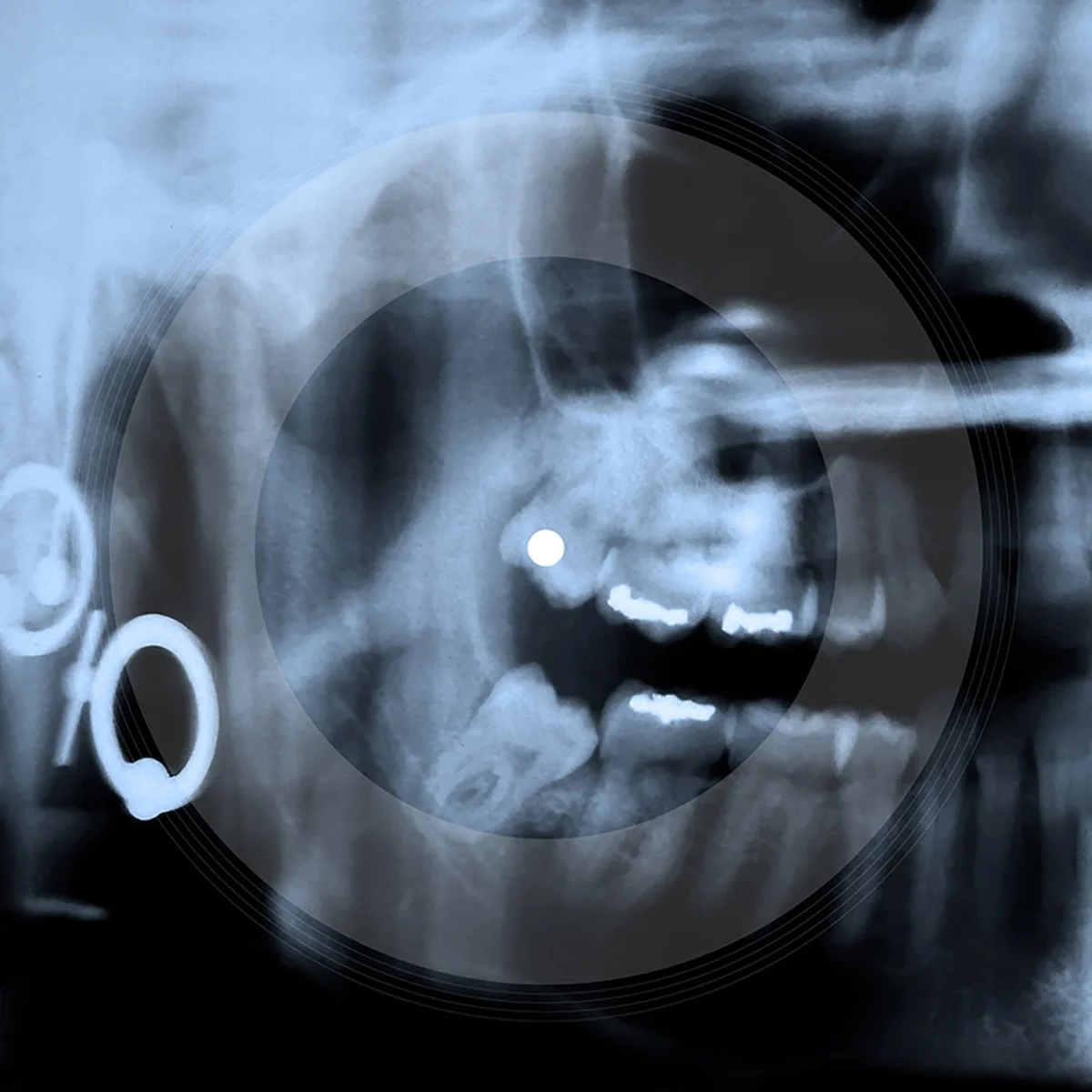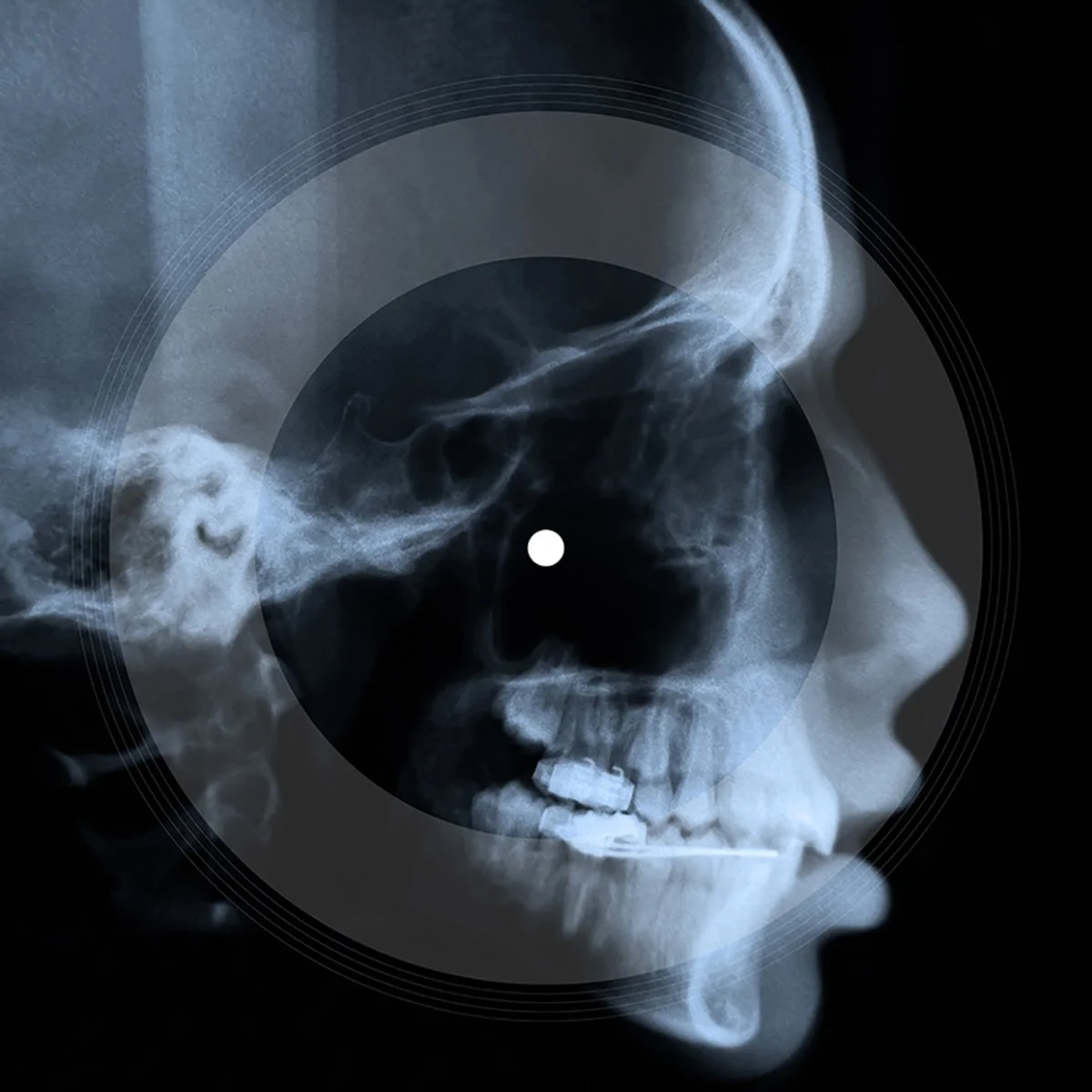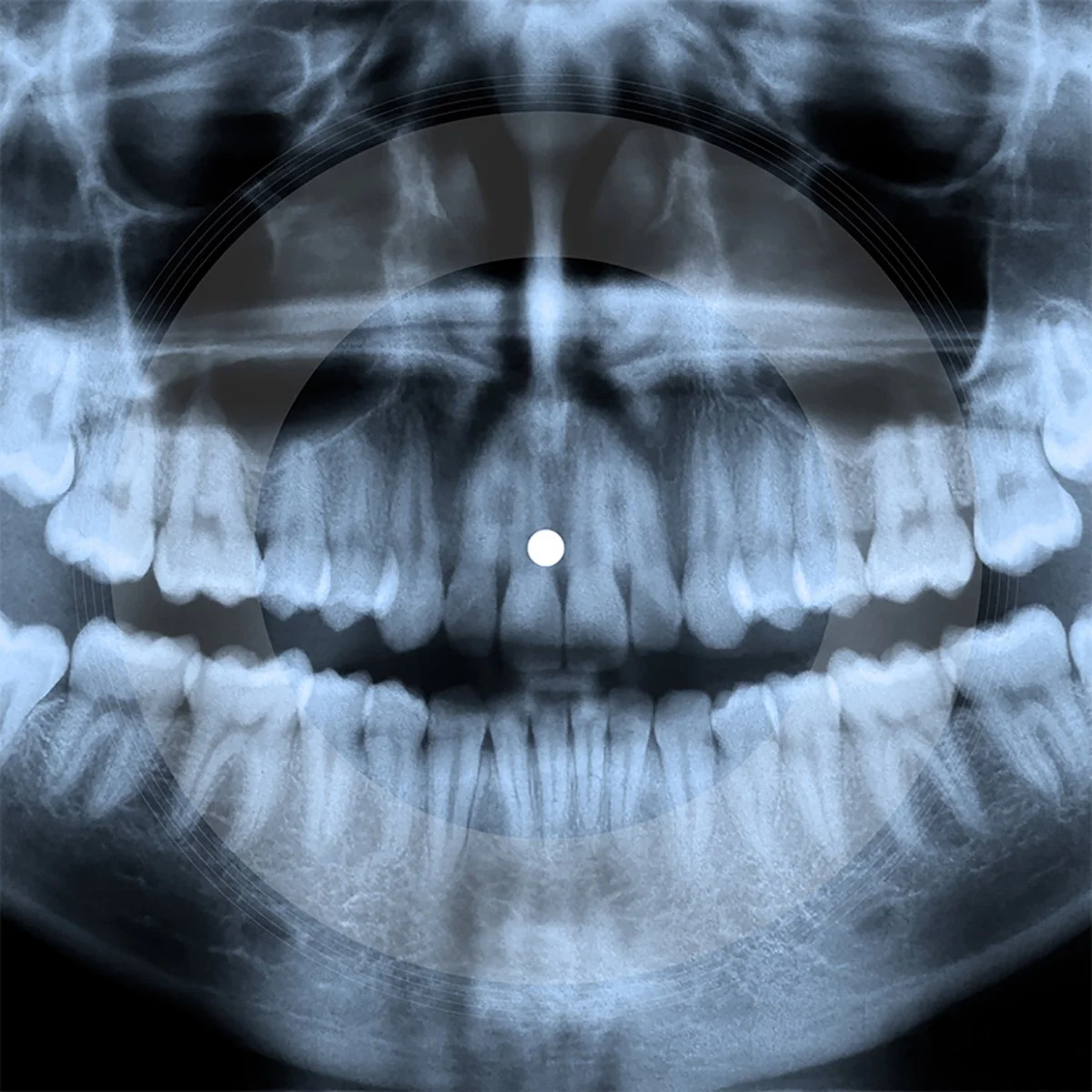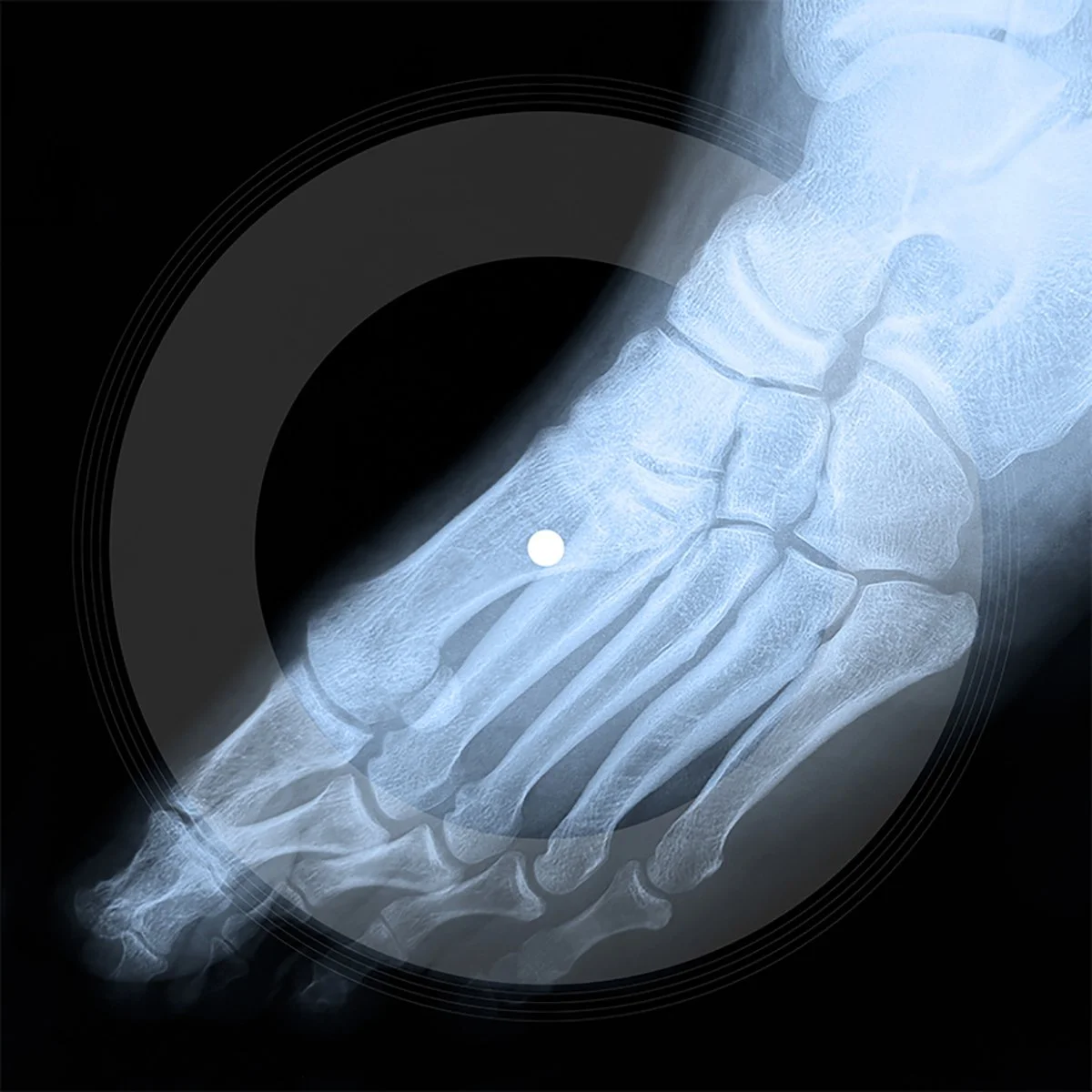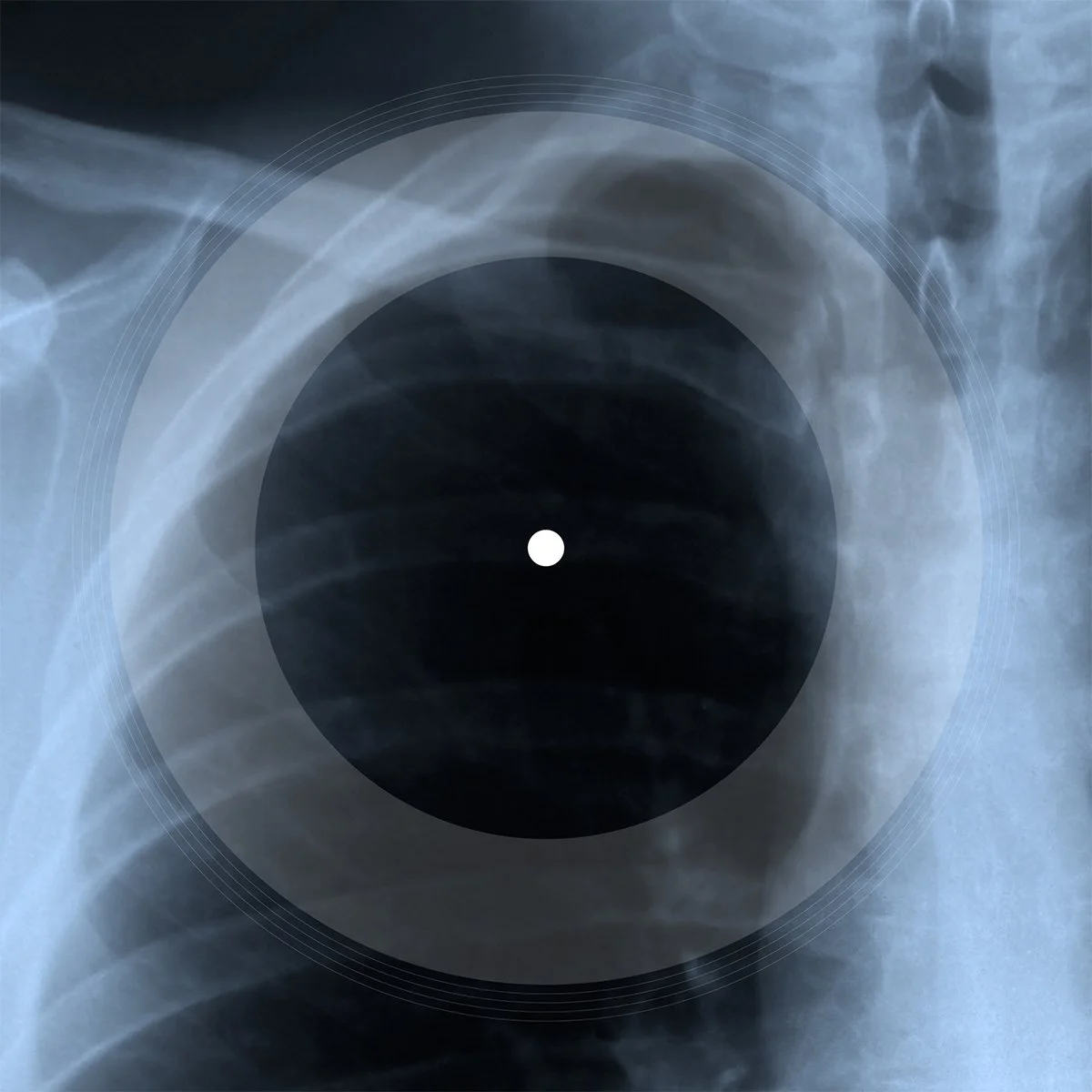Tomorrow I’ll Miss You
a new exhibition by Richard Humann
November 6 — December 20, 2025
New York based multi-media artist Richard Humann mixes modern technology with traditional art practices in this one-person exhibition, Tomorrow I’ll Miss You, at Leonovich Gallery, Chelsea, NY.
For the show, Humann produced over sixty music “singles,” pressed onto clear polycarbonate flex discs. The discs are backed with archival film of X-ray images. The concept in doing this is based on a practice that was common in the late 1950’s and early 1960’s in the USSR, and other countries trapped behind the Iron Curtain. Called bone music, music on bones, or jazz on bones, this was a black-market method of smuggling in behind the Iron Curtain music that was banned by the communists, for fear of Western influence.
This clandestine technique for circulating the banned pop music led to the introduction of Elvis Presley, The Beatles, The Rolling Stones, Bob Dylan, and other major recording artists from non-communist countries.
To create the work, Humann purchased a hundred actual X-rays and had them scanned. The X-rays are images of legs, arms, torsos, heads, as well as teeth from dental offices. They were then printed onto archival film and mounted to the backs of the clear polycarbonate flex discs.
The songs were pressed onto these discs, and which can be played on a record turntable. Humann wrote the lyrics to six songs that were created for the project, as well as the music, using a music AI program. For the AI generated music, he programmed meta tags that directed the program to mimic the sound, voice, and instruments from the mid-20th century, over the contemporary themes and references of the lyrics.
The lyric pages, and meta tags are displayed in the gallery as a road map to the inner workings of the thought process; the interaction between human and machine. Just like in the X-ray process itself, a machine gives an insight into the inner workings of the human body, and the lyric/meta tag text gives an insight into the inner workings of the machine. The underlying theme of the show addresses issues of artistic freedom, how the human spirit thrives in totalitarian societies.
— Elga Wimmer, curator

